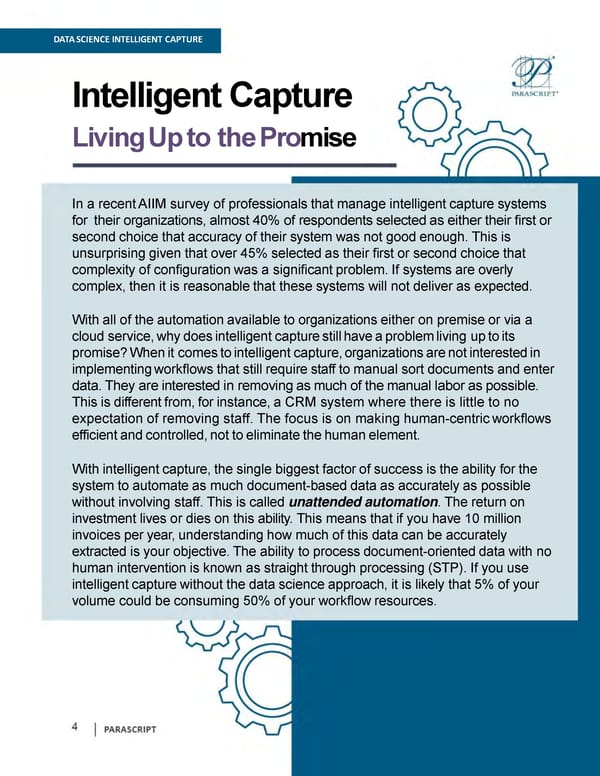DATA SCIENCE INTELLIGENT CAPTURE Intelligent Capture LivingUptothePromise In a recent AIIM survey of professionals that manage intelligent capture systems for their organizations, almost 40% of respondents selected as either their first or second choice that accuracy of their system was not good enough. This is unsurprising given that over 45% selected as their first or second choice that complexity of configuration was a significant problem. If systems are overly complex,thenit is reasonablethat these systems will not deliver as expected. With all of the automation available to organizations either on premise or via a cloud service,whydoesintelligent capturestillhaveaproblemliving uptoits promise?Whenit comestointelligent capture,organizationsarenotinterestedin implementingworkflowsthat still require staff to manual sort documents and enter data. They are interested in removingas much of themanual labor as possible. This is different from, for instance, a CRM system where there is little to no expectation of removing staff. The focus is on making human-centricworkflows efficient and controlled,not toeliminatethehumanelement. Withintelligent capture,the single biggest factor of success is the ability for the systemto automate as much document-based data as accurately as possible without involving staff. This is called unattended automation. The return on investment lives or dies on this ability. This means that if you have 10 million invoices per year, understanding how much of this data can be accurately extracted is your objective. The ability to process document-oriented data with no human intervention is known as straight through processing (STP). If you use intelligent capture without the data science approach, it is likely that 5% of your volume could be consuming 50% of your workflowresources.
 Data Science with Intelligent Capture Page 3 Page 5
Data Science with Intelligent Capture Page 3 Page 5